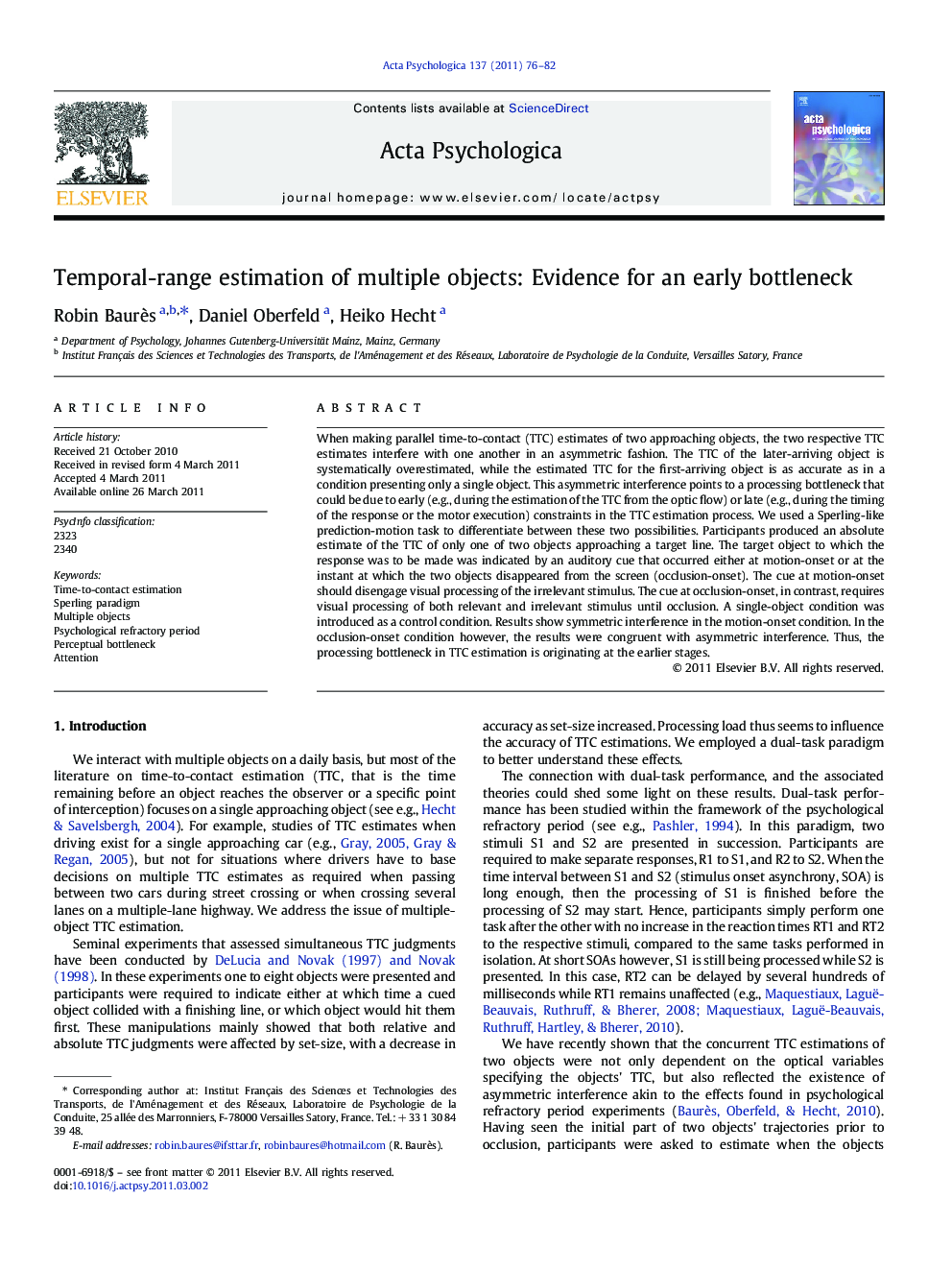| Article ID | Journal | Published Year | Pages | File Type |
|---|---|---|---|---|
| 920156 | Acta Psychologica | 2011 | 7 Pages |
When making parallel time-to-contact (TTC) estimates of two approaching objects, the two respective TTC estimates interfere with one another in an asymmetric fashion. The TTC of the later-arriving object is systematically overestimated, while the estimated TTC for the first-arriving object is as accurate as in a condition presenting only a single object. This asymmetric interference points to a processing bottleneck that could be due to early (e.g., during the estimation of the TTC from the optic flow) or late (e.g., during the timing of the response or the motor execution) constraints in the TTC estimation process. We used a Sperling-like prediction-motion task to differentiate between these two possibilities. Participants produced an absolute estimate of the TTC of only one of two objects approaching a target line. The target object to which the response was to be made was indicated by an auditory cue that occurred either at motion-onset or at the instant at which the two objects disappeared from the screen (occlusion-onset). The cue at motion-onset should disengage visual processing of the irrelevant stimulus. The cue at occlusion-onset, in contrast, requires visual processing of both relevant and irrelevant stimulus until occlusion. A single-object condition was introduced as a control condition. Results show symmetric interference in the motion-onset condition. In the occlusion-onset condition however, the results were congruent with asymmetric interference. Thus, the processing bottleneck in TTC estimation is originating at the earlier stages.
Research Highlights► Multiple time-to-contact estimates interfere in an asymmetric fashion. ► We study which stage of the TTC estimate process leads to this interference. ► Earlier stages are responsible for the observed bottleneck. ► Humans are unable to compute two absolute TTC estimates in parallel.
